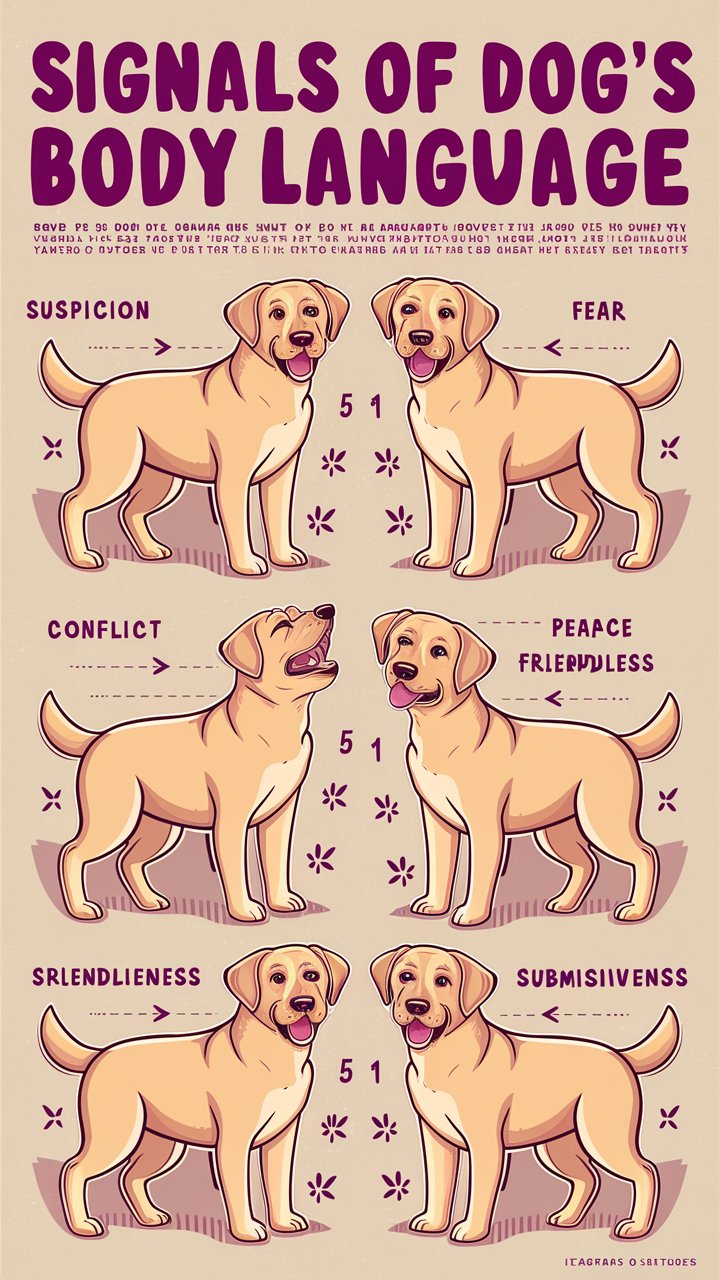Do you ever wonder what your dog is really trying to say? Those wagging tails, perky ears, or puppy eyes aren’t just random gestures—they’re your dog’s secret language. Understanding dog body language can transform your bond from basic companionship into a deeper, trust-filled relationship.
In this guide, we’ll decode your dog’s signals step by step, so you’ll know when they’re happy, anxious, playful, or feeling defensive.
🐕 Why Understanding Dog Body Language Matters
Dogs don’t speak human words. Instead, they rely on body language to communicate emotions, needs, and even warnings.
👉 By learning to “read” your dog, you can:
- Prevent behavioral problems.
- Avoid stressful or aggressive encounters.
- Build stronger trust with your pup.
- Enhance training results.
📌 Pro Tip: Experts agree that 90% of dog communication is non-verbal. If you miss those signals, you might miss what your dog is really telling you!
🐾 The Tail: More Than Just a Wag
A wagging tail doesn’t always mean a happy dog—it’s a complex communication tool.
- Wide, relaxed wag (whole body moving): Pure joy and friendliness.
- Slow wag, mid-level: Uncertain, cautious, or deciding what to do next.
- High, stiff wag: Alert, on guard, or even showing dominance.
- Low tucked tail: Fear, submission, or stress.
📌 Did You Know? Studies show that dogs wagging more to the right side are usually happy, while wagging to the left can signal stress.
🐶 The Face: Expressions You Shouldn’t Ignore
Your dog’s face is like an emotional billboard. Here’s what to look for:
- Relaxed eyes & soft mouth: Calm and happy.
- Whale eye (seeing the whites of eyes): Anxiety or discomfort.
- Wrinkled nose, bared teeth: Aggression or fear—step back.
- Yawning or lip licking (out of context): Stress-relief signals, not just “sleepy.”
📌 Pro Tip: If your dog suddenly avoids eye contact, they may be anxious. Gentle reassurance works better than forcing attention.
👂 The Ears: Mood Rings for Dogs
Different breeds have different ear shapes, but positions still reveal emotions.
- Ears forward/perked up: Alert, curious, or excited.
- Ears relaxed & sideways: Calm and content.
- Ears pinned back: Fear, submission, or extreme stress.
👉 Think of ears as instant “emotion detectors.”
🐕🦺 The Body: Posture Speaks Loudly
Your dog’s stance shows exactly how they feel in the moment:
- Play bow (front legs down, back up): Excited and inviting play.
- Crouching low: Fearful, insecure, or submissive.
- Standing tall, chest forward: Confidence, dominance, or protective stance.
- Rolling on back (showing belly): Trust and submission—but sometimes also stress.
📌 Note: A wagging tail + stiff posture = not happy excitement, but possible aggression. Always read signals together, not in isolation.
👀 Eye Contact: Bonding vs. Warning
- Soft gaze, blinking slowly: Trust and affection.
- Direct hard stare: Challenge or threat (avoid staring contests).
- Avoiding eye contact: Anxiety or desire to avoid conflict.
📌 Pro Tip: Use gentle, soft eye contact during training—it builds trust and focus.
💡 Turning Observation into Action
Knowing the signals is step one. Acting on them is step two.
- If your dog is anxious: Remove triggers, give them space, and use calming cues.
- If your dog is excited/playful: Engage in safe playtime.
- If your dog shows aggression: Stay calm, don’t punish, and redirect safely.
- If your dog seeks comfort: Provide reassurance with touch or calming words.
🧠 Advanced Tips to Improve Communication
- Learn breed-specific signals – Huskies use more vocal cues, while Labs rely more on tail/body.
- Use positive reinforcement – Reward calm communication with treats.
- Keep a behavior diary – Track when your dog shows stress or joy. Patterns reveal triggers.
- Consider professional training – A certified behaviorist can decode signals better and guide you.
❓ FAQs About Dog Body Language
Q1: Why does my dog lick my face or hands?
A: It’s usually affection, submission, or a way to get attention.
Q2: My dog yawns a lot—are they tired?
A: Not always! Dogs yawn when stressed or trying to calm themselves.
Q3: How can I tell if my dog is in pain?
A: Watch for unusual stiffness, limping, avoidance of touch, or changes in posture.
Q4: Do all dogs show the same signals?
A: Basic cues are universal, but intensity and frequency vary by breed and personality.
✅ Final Thoughts
Decoding your dog’s body language isn’t just fun—it’s essential for building trust and preventing problems. From tail wags to ear twitches, every signal has meaning. The more you learn, the better you’ll understand your pup’s emotions.
So next time your furry friend “talks” through body language, listen closely—you’ll be amazed at how much they’ve been saying all along. 🐾
